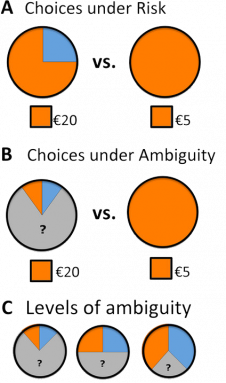Teens make riskier decisions than children or adults
Teens are willing to take a gamble, even when the odds are unclear

Many adolescents participate in risky behaviors, such as skateboarding without a helmet. They appear to be less bothered by uncertain outcomes than other age groups.
Izf/iStockphoto
Many teens make risky decisions, such as reckless driving or binge drinking. Some of those choices can kill them. Teens may behave in this way because they don’t know the likelihood of a bad outcome. Or — more importantly — they may do it because they don’t care. In fact, a new study concludes that the second option is the more likely one.
Wouter van den Bos and Ralph Hertwig are psychologists at the Max Planck Institute for Human Development in Berlin, Germany. They study how people search out information and make decisions based on what they have learned. The pair wanted to know why the results of certain lab experiments don’t match up with real-life data.
Lab experiments have shown that risky behavior drops steadily as people grow from children into adults. But real-life data show a very different pattern: Adolescents take more risks than do younger children or adults. Teens also are more likely to be injured or die as a result of such behaviors.
Van den Bos and Hertwig designed an experiment to see if they could resolve why teens behave this way. They recruited 105 people, all from eight to 22 years old. By including a range of ages, the researchers could test how behavior changes from childhood through to young adulthood.
All played a kind of gambling game. Over and over, they had to choose between taking a guaranteed prize of five euros (a euro is equal to a little more than one U.S. dollar) or spinning a wheel. The wheel was divided into 10 equal-sized wedges. Some were orange, others blue. If the wheel stopped spinning on an orange wedge, the participant won or lost money. This could be between 3 and 32 euros. But if the wheel stopped on a blue wedge, they got nothing. Each participant played the game 108 times.
The five-euro option was a guaranteed win. It had no risk. In contrast, participants who chose to spin had anywhere from a 10- to 90-percent chance of winning — or losing — money. So spinning the wheel was a risky choice.

To find out how people used the information they have, the researchers took things a step further. In half of the trials, the orange and blue wedges were visible around the entire wheel. That meant participants could see how likely they were to win or lose: They faced known risks.
In the other trials, part of the wheel was covered. Participants had no idea how likely they were to win. The researchers varied how much of the wheel could be seen. As more of the wheel was covered, the risks of spinning became more and more ambiguous, or unclear.
Teens were more likely to spin the wheel, even when much of the wheel was covered, van den Bos and Hertwig found. The teens were not bothered by the lack of information about the risk they were taking. Children and adults, however, avoided those ambiguous situations. Instead, they chose the guaranteed reward in these trials.
The study’s findings appeared on January 18 in Scientific Reports.
Teenagers’ attitudes toward uncertainty make sense, van den Bos says. “In the teenage years, there is a lot to explore and to learn by exploration.” Many experiences are new, he notes, and teens don’t know how they will turn out. “Many of these [situations] are not dangerous and are helpful in becoming an independent adult. So in general, this seems to be a good attitude to have,” he concludes.
But, he cautions, it’s also good to consider whether a behavior may have very negative — and long-lasting — consequences. Where that’s the case, he points out, teens should stop to think before they act.
The results are exciting, says Valerie Reyna. A psychologist at Cornell University in Ithaca, N.Y., she was not involved with the new work. “The most important aspect of this research is the careful use of lab tasks that separate attitudes toward risk ambiguity, and exploring the unknown,” she says. Combining lab experiments with studies of what teens do in real life can help “to solve vast problems in health and economics that originate in adolescent risk-taking,” she says.







